Speakers
(in alphabetical order by surname)
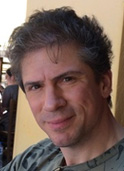
Serafim Batzoglou
Stanford University, USA
Personal Genomics and Computation
Abstract: I will discuss personalized genomics from a computational perspective. Computational contributions have been instrumental in the brief history of personalized genomics, starting from the sequencing of the first human genomes. Looking at the present and future, personalized genomics is likely to soon have massive positive impact in our understanding of human biology and practice of medicine; algorithms, artificial intelligence and large scale computing will be at the heart of these advances.
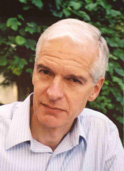
Peter Cook
University of Oxford, UK
Transcription factories: genome organization and gene regulation
Abstract: We suggest transcription ‘factories’ are major organizers of interphase human chromosomes. The nucleolus is the prototypic factory – a place where rRNA genes are efficiently co-transcribed by clusters of RNA polymerase I. Analogous polymerase II clusters in nucleoplasmic factories make protein-coding transcripts. Then, a promoter is likely to initiate if tethered near a factory containing appropriate factors. As motifs like enhancers, silencers, insulators, barriers, and boundaries are transcription units, they would work by tethering target promoters close to, or distant from, suitable factories; although we might name the motifs differently, they are all just transcription units influencing promoter-factory distance (and so initiation frequency). Using molecular dynamic simulations, we uncover a force driving this organization. Bivalent red and green spheres (‘transcription factors’) bind to cognate sites in runs of ‘active’ and ‘inactive’ beads (‘chromatin’) to form molecular bridges stabilizing loops. In the absence of additional explicit forces, ‘factors’ bind and spontaneously cluster into ‘factories’; red factors cluster with red ones, green with green, but rarely red with green. Binding yields rosettes, domains, and contact maps like those seen using ‘Hi-C’. This ‘bridging-induced attraction’ provides a robust, simple, and generic force able to organize chromosomes.

Christoph Cremer
University of Mainz, Germany
Localization Microscopy of Nuclear Genome Nanostructure: Imaging the epigenetic Landscape
Abstract: Here, we report on the nanoscale imaging of the epigenetic nuclear landscape based on Spectral Precision Distance/Position Determination Microscopy (SPDM). SPDM, a variant of localization microscopy, makes use of conventional fluorescent proteins or single standard organic fluorophores in combination with standard (or only slightly modified) specimen preparation conditions, allowing to use the same laser frequency for both photoswitching and fluorescence read out. This variant of Single Molecule Localization Microscopy (SMLM) has provided a light optical resolution down to a few tens of nanometers. The approach has been used in my group to study the nuclear topography of individual chromatin domains and newly replicated DNA, the nuclear landscape of histone modifications and factors involved in transcription, splicing and repair, as well as chromatin remodeling proteins. The experimental results support a recent model of functional nuclear structure, which argues for two, co-localized and dynamically interacting, active and inactive nuclear compartments (ANC and INC).1 As a novel perspective with potential medical applications, dual-color SPDM was applied to monitor in mouse cardiomyocyte cell nuclei the environmental effects of ischemia on chromatin nanostructure2. These developments open an avenue to study the 4D-nucleome directly on the individual cell level at single molecule resolution.

Thomas Cremer
University of Munich, Germany
3D nuclear topography of active and inactive regulatory sequences studied with structured illumination microscopy
Abstract: The coordinated expression of genes requires the coordinated action of transcription regulatory elements (TREs) including non-transcribing sequences such as promoters, enhancers, insulators, silencers and locus control regions. Genome targets with active TREs show an increased sensitivity to DNAse I digestion, called DNAse I hypersensitive sites (DHS+) with an average size between 100-1000 bp. Genome wide maps of DHS+ sites have been published for diverse human cell types. Many such DHS+ targets in one cell type are not DNase I sensitive in another cell type (DHS-), indicating that regulatory sequences are not actively used there. In the present study we investigated for the first time the 3D nuclear topography of active and inactive regulatory sequences. We demonstrate significant differences between the 3D topography of active and inactive targets. We have recently proposed a model for a functionally defined nuclear organization based on two co-aligned three-dimensional networks: an active and an inactive nuclear compartment (ANC and INC) (Cremer et al., 2015. FEBS Letters 589, 2931–2943). Experimental evidence for this model shows that chromosome territories (CTs) are built up from chromatin domain clusters (CDCs), which form still higher networks pervading the nuclear space. Whereas the compacted chromatin core of CDCs, called the INC, is enriched in repressive histone marks, a peripheral peripheral layer of low density chromatin, called the perichromatin region (PR) is enriched in epigenetic marks for transcriptionally competent chromatin and represents the nuclear domain, where transcription, splicing, chromatin replication and DNA repair occur. The PR lines a contiguous channel system, the interchromatin compartment (IC), which starts at nuclear pores, permeates the nuclear space between the higher order chromatin network and serves a role in nuclear import and export functions. The IC carries nuclear bodies and splicing speckles and interacts with the PR. Accordingly, the PR together with the IC is called the ANC. In line with the ANC-INC model we demonstrate that active regulatory sequences are exposed at the outer periphery of CDCs with loops penetrating into the IC. By contrast, inactive regulatory sequences are more embedded within the interior of CDCs, although still excluded from the most compact core.

Peter Fraser
The Babraham Institute, UK
3D Genome Dynam
Abstract: Three-dimensional chromatin organization is tissue-specific and plays multiple roles in control of genome functions. However, individual cells show a high level of variability in chromosome conformation and genome organization, which limits the interpretive power of cell population based experiments. To create a better understanding of how genome structure relates to function we have developed single cell Hi-C. Our original Hi-C experiments were characterized by sparse genomic coverage and low cell throughput. We studied the single X chromosome of male Th1 cells from an inbred strain of mice. We showed that all cells showed evidence of topological domain structures (TADs), and that the single X chromosome structure varied significantly from cell to cell at the level of long-range inter-TAD interactions. We showed that active domains tended to locate to the surface of chromosome territory structures and preferentially contacted other active TADs via robust inter-chromosomal contacts. Lamin associated domains (LADs) also tended to locate to the surface of chromosome territories but were devoid of inter-chromosomal contacts, and were often found on one side of the chromosome territory consistent with chromosome positioning adjacent to the nuclear lamina. Here we present the next generation of single cell Hi-C experiments on haploid and diploid F1 hybrid mouse ES cells. We have dramatically improved both genomic coverage and cell throughput and will present and discuss ongoing analyses and results from thousands of single cells, which illustrate the dynamics of genome conformations

Peng Li
Tsinghua University, China
The Biology and Mechanism of Lipid Storage
Abstract: Neutral lipids in particular TAGs are the major energy source that can be stored under energy excess condition and released in the form of FAs under starvation condition. Excessive lipid storage in adipocytes or liver leads to the development of obesity and fatty liver disease. On the contrary, defective lipid storage in adipocytes results in lipodystrophy, fatty liver disease and insulin resistance. Lipid droplets (LDs) are dynamic subcellular organelles responsible for lipid storage and control intracellular lipid homeostasis. We have shown that CIDE family proteins consisting Cidea, Cideb and Fsp27 (Cidec) are LD and ER-associated proteins. CIDE proteins are important regulatory factors for lipid storage in adipocytes, hepatocytes, mammary epithelial cells and skin sebocytes. Over the last few years, our research suggests that CIDE family proteins are highly enriched at LD-LD contact sites (LDCS) and promote atypical form of LD fusion by initiating a directional lipid transfer from smaller to larger LDs. We have identified Perilipin1 (Plin1), another adipocyte-specific lipid droplet-associated protein, as an Fsp27 activator. The functional cooperation between Plin1 and Fsp27 is required for efficient LD growth in adipocytes. We have also identified Rab8a-AS160-MSS4 regulatory circuit to control LD fusion and obesity development. Detailed molecular mechanisms underlying CIDE proteins in controlling LD fusion and lipid storage will be discussed.
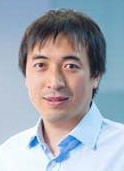
Shuai Cheng Li
City University of Hong Kong, Hong Kong
Large Scale 3D Chromatin Reconstruction Form Chromosomal Contacts
Abstract: Recent advances in genome analysis techniques have established that chromatins have preferred three-dimensional (3D) confirmations. Spatial folding can bring two distant genes along the nucleotide sequence into contact. Identifying these contacts is important to understand activities of genes. This has motivated the proposal of methods like Hi-C to detect long-range interactions in the past decade. One can further gain insights on the contacts by applying distance geometry techniques to infer the chromosomal 3D structures from Hi-C data, as has been demonstrated by algorithms such as ChromSDE and ShRec3D. These matrix-based algorithms, however, are space- and time- consuming on very large datasets. A human genome of 100 kilobase resolution would involve ~30,000 loci, requiring gigabytes in merely storing the matrices. In this work, we propose a succinct representation of the distance matrix which tremendously reduce this space requirement. We give a complete solution, called SuperRec, for the inference of chromosomal structures from Hi-C data, through solving the large-scale weighted multidimensional scaling problem. SuperRec runs faster than earlier systems without compromise on result accuracy. Using SuperRec, we were able to reconstruct a structure of 30,000 loci more than 400 times faster than existing methods --- SuperRec solved the structure in 43 minutes whereas the state of the art method ShRec3D took 13 days.
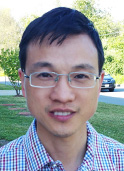
Hanhui Ma
University of Massachusetts Medical School, USA
CRISPR-Based Imaging of Genomic DNA Dynamics in Living Cells
Abstract: Human genome-encoded information has been annotated in a linear fashion but in the cell a dynamic 3-D organization and interaction of genomic elements are required for gene expression and regulation. We have developed a series of CRISPR-based approaches for the study of interphase chromosome dynamics in human cells including CRISPR-Multicolor (Ma et al, 2015, PNAS. 112: 3002-3007), CRISPRainbow (Ma et al, 2016, Nat. Biotechnol. 34: 528-530.) and most recently CRISPR-Sirius. These approaches repurposed the bacterial CRISPR-Cas9 system for imaging and tracking specific genomic sites in living cells. In the course of innovating these new technologies we have found ourselves in a position to interrogate the intranuclear dynamics and target site recognition of Cas9-guide RNAs. These new systems we have developed constitute an orthogonal platform for determining genomic DNA localization, dynamics and inter-locus interactions in living cells in space and time.

Christian Macedonia
Johns Hopkins University School of Medicine, USA
What is a “gene”…no really, what is a gene?
Abstract: Through recent modern history, the definition of the word “gene” has gradually changed from the time that Wilhelm Johannsen coined the term in 1903 until today. After the discovery of DNA as the primary repository of genetic information and the unmasking of the codon code in the late 1950s, the definition of a gene has been primarily expressed as a relationship between nucleotide sequence coding and the transcription and translation into proteins. More recent definitions, post ENCODE, have broadened to include nucleotide sequences encoding for non-protein producing as well as protein producing transcripts. We are at the point, however, that the definition of a gene may need to come full circle to the origins of this term. If we view the genome as a biologically evolved information system and as being “computable” then we must arrive at definitions of genome activity internally consistent with that framework. The gene, then, could possibly be viewed as the simplest and irreducible computable object within that framework. This definition removes the gene from being entirely a function of sequence but also makes it more amenable to in-silico modeling. While this was and is a heretical view, it was the philosophical basis of the DARPA BIOCHRONICITY Program.
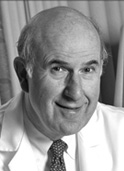
Gilbert Omenn
University of Michigan, USA
Dynamics of the ERBB2 Chromosome 17q12-21 Amplicon and Related Splice Isoforms in ERBB2+ Breast Cancers
Abstract: As part of the global Human Proteome Project of the Human Proteome Organization (www.thehpp.org), my colleagues and I have focused on the ERBB2 amplicon on chromosome 17q12-21 as a causal agent for about 20% of human breast cancers. ERBB2 forms heterodimers with ERBB1 (EGFR), ERBB3, and ERBB4, making them good subjects for potential 4D Nucleome studies. Therapies with antibodies targeted on the ERBB2 cell surface receptor or with small molecules to inhibit the intracellular tyrosine kinase domain of the protein are highly successful. We have extensively explored the dynamics of this gene and variable co-expression of up to 22 other genes in the Chr 17 amplicon. We have characterized differential expression of splice isoforms of these genes and of downstream genes. The emergence of splice isoforms of transcripts and their protein products are one of the most remarkable evolutionary developments in multi-cellular organisms with multi-exonic gene structures.

Indika Rajapakse
University of Michigan, USA
Mathematics of Cellular Reprogramming (work with Stephen Smale)
Abstract: In 2007, a remarkable discovery was made that with just 4 external inputs (transcription factors), it was possible to change differentiated cells into embryonic-like cells. This type of cellular reprogramming changes the fundamental nature of a cell. It invites the possibility of building a universal template for transcription factor guided reprogramming. I will discuss our initial work on this, using advanced genomics technologies + mathematics.
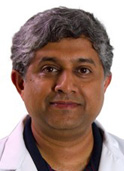
G.V. Shivashankar
National University of Singapore, Singapore
Nuclear Mechanics of Genome Reprogramming
Abstract: Physico-chemical signals from the extracellular matrix impinge on cellular geometry resulting in altered functional nuclear landscape and gene expression. While these alterations regulate diverse biological processes including stem-cell differentiation, developmental genetic programs and cellular homeostasis; the biophysical principles underlying such control systems are unclear. Using a multidisciplinary approach by combining high resolution optical imaging, quantitative single-cell biophysics and functional genomics, our laboratory investigates the principles underlying the coupling between nuclear mechanics and genome regulation. I will describe our ongoing work that provides modular links between cellular geometry and nuclear mechanics and its impact on transcription dependent 3D organization of chromosomes and reprogramming. Such optimized modular links define the normal state of cells and these links are altered during diseases. In this context, our studies will also have profound impact on developing single-cell nuclear biomechanical markers in early disease diagnostics for therapeutic intervention.
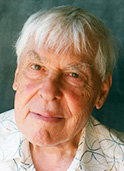
Stephen Smale
City University of Hong Kong, Hong Kong
Emergence of Function (work with Indika Rajapakse)
Abstract: A tissue is able to function through its cells acting in a coordinated way. And in turn the function of a cell may be identified with the distribution of proteins in that cell. A common distribution is established and maintained via genetic dynamics and (idealized) diffusion via cell membranes in the tissue. We give a mathematical treatment using Turing's equations of morphogenesis, yet we are aware of the dichotomy, emergence vs. morphogenesis.
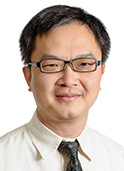
Limsoon Wong
National University of Singapore, Singapore
Enabling more sophisticated analysis of proteomics profiles
Abstract: Mass spectrometry (MS)-based proteomics is a widely used and powerful tool for profiling systems-wide protein expression changes. It can be applied for various purposes, e.g. biomarker discovery in diseases and study of drug responses. Nonetheless, MS-based proteomics tend to have consistency issues (poor reproducibility and inter-sample agreement) and coverage issues (inability to detect the entire proteome) that need to be urgently addressed. In this talk, I will discuss how these issues can be addressed by proteomic profile analysis techniques that use biological networks (especially protein complexes) as the biological context. In particular, I will describe several techniques that we have been developing for network-based analysis of proteomics profile. And I will present evidence that these techniques are useful in identifying proteomics-profile analysis results that are more consistent, more reproducible, more robust in the presence of batch effects, and more biologically coherent, and that these techniques allow expansion of the detected proteome to uncover and/or discover novel proteins.
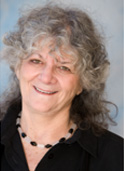
Ada Yonath
Weizmann Institute of Science, Israel
Species-specific genetic diversity in susceptibility of pathogens: current situation and future expectations
Abstract: The genetic and structural bases for species-specific diversity in infectious-diseases susceptibility may be beneficial for the design of selective advanced degradable antibiotics. Thus, the resistance to antibiotics and the spread of their non-degradable metabolites are severe problems in contemporary medicine.
Owing to their key role in life, the ribosomes, the cellular factories for the translation of the genetic code, are targeted by many antibiotics. The structures of non-pathogenic eubacterial-ribosomes in complex with antibiotics that paralyze them illuminated common pathways in the modes of antibiotics inhibitions, synergism, and selectivity. Recent structures of complexes of ribosome from a multi-resistant pathogenic bacteria identified features that can account for species-specific diversity in infectious-diseases susceptibility. Furthermore, careful analysis and comparisons to ribosomes from benign bacteria indicated that they may lead to the design of environmental-friendly degradable antibiotics, alongside species-specific drugs, thus protecting the environment alongside preserving the microbiome.
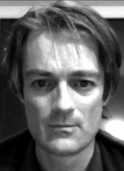
Christophe Zimmer
Pasteur Institute, France
Imaging and modeling chromosome architecture and dynamics
Abstract: Our group develops computational and experimental imaging and modeling approaches for cell biology and microbiology. The talk will discuss our work on the spatial organization of the yeast nucleus. Nuclear organization plays an important role in many functional processes, but has yet to be charted in detail, and the underlying principles remain poorly known. I will describe imaging and modeling approaches that we developed over the years to map yeast nuclear architecture and understand its mechanistic basis. In particular, I will show how a simple polymer model can recapitulate experimental data on the yeast nucleus, and how this model can be used to infer key properties of the chromatin fiber. I will also discuss collaborative work from our lab addressing how nuclear architecture constrains DNA repair, and how DNA damage increases chromatin mobility.
